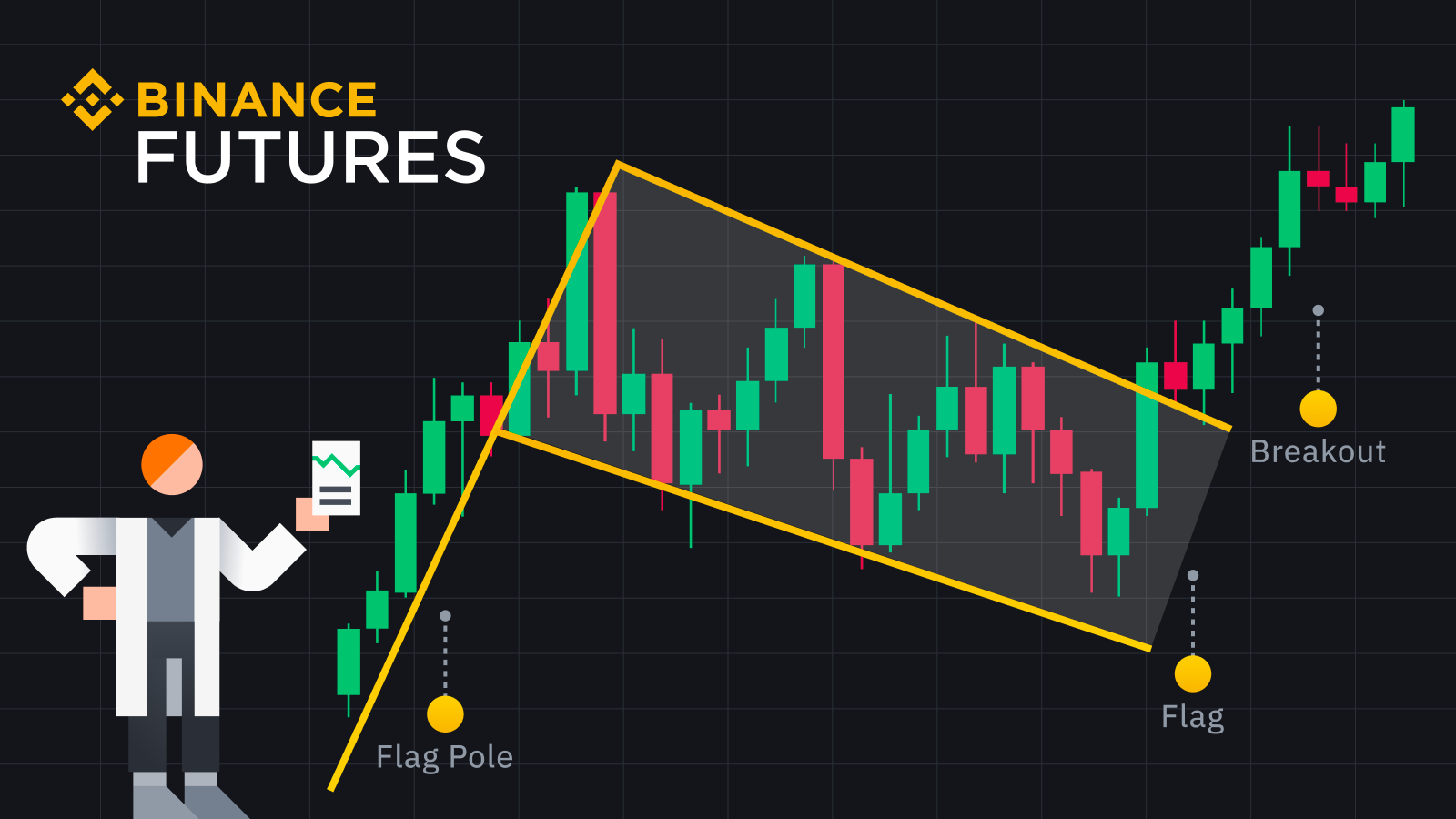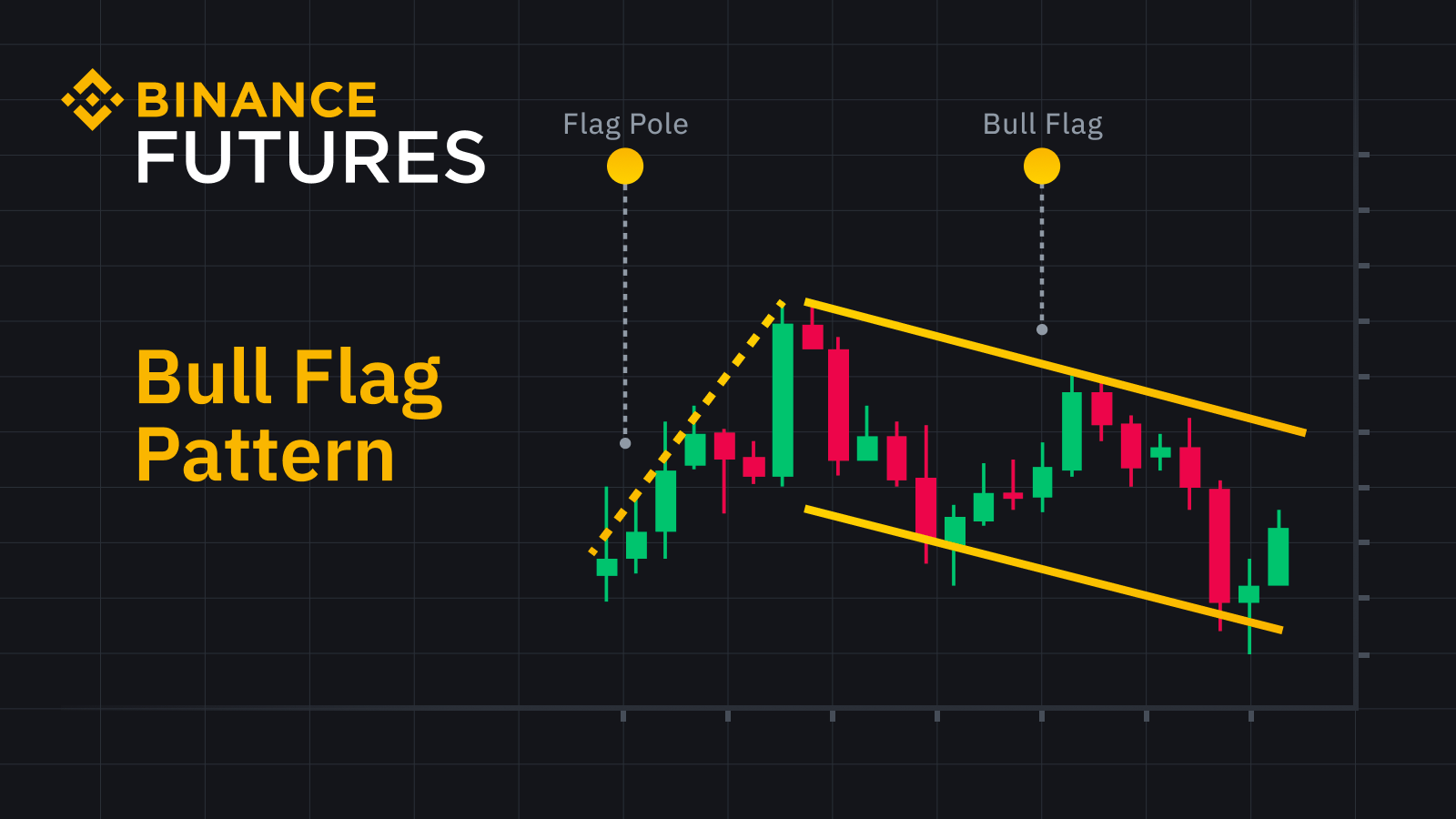What Are Bull Flags and Bear Flags and How to Trade Them
Disclaimer: Binance Futures products are restricted to certain countries and users. This content is not intended for users/countries to which restrictions apply. See our terms of use and risk warning.
Main Takeaways
When spotted in a strongly trending market, flag patterns can be potential indicators for traders to go long or short.
Bull flags and bear flags are commonly traded continuation patterns made up of three main components – the pole, flag, and breakout point.
Traders can use flags with other indicators, such as the Relative Strength Index (RSI), to gauge how overbought or oversold an asset may be.
Identifying trends early while trading in digital assets allows traders to plan and execute their trades effectively. Chart patterns are an essential tool many technical analysts utilize to try and predict future movements of digital assets and recognize key patterns.
Traders commonly rely on bullish and bearish chart patterns to try and determine whether a price trend will extend or reverse. Among these patterns, flags are quite popular in technical analysis as they can provide valuable insights into price trends and potential future movements.
Flag patterns formed by lines and shapes drawn onto price charts are potentially useful in identifying forthcoming trends, breakouts, and reversals. This article explores two types of flag patterns: bull and bear flags and provides insights into how some traders use them when these patterns appear.
What Are Bull Flags and Bear Flags?
Bullish and bearish flags are among the most popular continuation patterns, typically spotted when the trend is likely to continue to prevail.
Bull flags typically appear in an uptrend when the price trend is expected to continue upward. Bear flags are usually observed in a downtrend when the asset's price is anticipated to face further downside pressure.
Each flag pattern comprises two main components: the pole and the flag. The pole represents a significant move higher or lower, depending on whether it is a bullish or bearish flag. Typically, a considerable surge in trading volume accompanies the creation of the flag pole.
Following the formation of the flag pole is a consolidation phase. This looks similar to an ascending or descending parallel channel and creates the flag of the chart pattern.
For bull flags, the pole precedes the flag, while for bear flags, the flag forms before the pole.
How to Trade Bull Flag Pattern
A flag pattern can be an informative chart pattern that some traders use to analyze potential breakout price points for entering and exiting trades. The chart pattern can also be used to try estimate how far the price may rise or fall. The price action for both bull and bear flags usually mirrors the pole's distance after a breakout or sharp reversal.
Traders tend first to identify a bullish trend that has started to consolidate. During the consolidation phase, the price would form a rectangular shape with an upper boundary resistance line and a parallel lower boundary support line.
Once the bull flag pattern is identified, traders locate the entry point. The breakout point is where the candle slices above the upper boundary of the flag, and this area serves as the entry point for buyers. The target for the bull flag is the pole height percentage rise added to the breakout point.
To minimize potential losses, some traders may also place a stop-loss at the flag's base, the consolidation phase's lowest point. This will limit the potential losses if the price moves against the trade.
Some traders can use the height of the flagpole to set a profit target. To determine the profit target, traders need to measure the flagpole height from the bottom of the pole to the top of the pole and then add it to the breakout price.
How to Trade Bear Flag Pattern
To determine the entry point for sellers in a bear flag pattern, the pole height is subtracted from the breakout price. This occurs when the asset price slices below the lower boundary of the flag.
To limit potential losses, some traders may put a stop-loss at the swing high of the flag, which is the highest point of the consolidation phase in case the asset moves in the opposite direction.
To calculate the pole height, traders need to subtract the lowest point of the pole from the highest point of the pole. The consolidation phase for both bull flags and bear flags should ideally not surpass 50% of the flag pole. A retracement phase greater than 50% may indicate that the trend does not have the required strength.
Additionally, the retracement phase is typically 38.2% from the swing high – the highest point of the pole.
When looking to enter a short position, some traders wait for confirmation of the downtrend rather than simply placing an order after the price breaks below the flag's support line. This can help to avoid false signals and potential losses.
A stop-loss order can be used to try and limit losses should the price start moving in the opposite direction. Typically, traders may place the stop-loss order above the resistance line of the flag.
A worked example
Suppose you're trading ETH USDT on the daily chart, and you notice a bear flag pattern forming. The flag's lower line is $2,500, and the upper line is $2,800.
Say as a conservative trader, you decide to set your profit target using the distance between the flag's parallel trend lines. In this case, the difference between the two lines is $300, so you add this amount to the price at the breakout entry point, which is $2,400.
Therefore, your price target is $2,700.
To manage your risk, you may place a stop-loss order above the resistance line of the flag at, say, $2,900. If the price moves in the opposite direction, your stop-loss order will be triggered, limiting potential losses.
Flags vs. Pennants
It is not uncommon for traders to confuse flag patterns with pennants, another type of continuation pattern that suggests the trend will likely continue after consolidation.
Like flags, pennants also include a flag pole. While flags have a rectangular consolidation phase, pennants form a triangular shape, with two converging lines creating the consolidation period.
Use Bull and Bear Flags With Care
Bull flags and bear flags can serve as valuable tools in technical analysis to determine target prices in trending markets. However, they do not guarantee the projected return, as false breakouts can occur. A false breakout happens when a crypto asset breaks through the critical boundary of the flag but then quickly retraces.
Traders may first identify whether there is a consistent trend. This could be as a bull flag appearing in a market with accelerating interest or a bear flag forming in a trend with weakening momentum. Volume is also crucial, as strong moves usually accompany a breakout.
Note that traders often use indicators together. The Relative Strength Index (RSI) is commonly used with bull and bear flags to gauge how overbought or oversold a crypto asset is.
Further Reading
(Blog) Two Technical Indicators to Gauge Market Trends in Binance Futures
(Blog) How to Implement Market-Neutral Strategies with Binance Futures
Risk Warning: Digital asset prices can be volatile. The value of your investment can go down or up, and you may not get back the amount invested. You are solely responsible for your investment decisions, and Binance is not liable for any losses you may incur. Futures trading, in particular, is subject to high market risk and price volatility. All of your margin balance may be liquidated in the event of adverse price movement. Past performance is not a reliable predictor of future performance. Before trading, you should make an independent assessment of the appropriateness of the transaction in light of your own objectives and circumstances, including the risks and potential benefits. Consult your own advisers where appropriate. This information should not be construed as financial or investment advice. To learn more about how to protect yourself, visit our Responsible Trading page. For more information, see our Terms of Use and Risk Warning.
Cryptocurrency derivative products may be restricted in certain jurisdictions or regions or to certain users in accordance with applicable legal and regulatory requirements. This content is intended only for those users who are permitted to access and receive the products and services referred to and are not intended for users to whom restrictions apply. You are responsible for informing yourself about and observing any restrictions and/or requirements imposed with respect to the access to and use of any products and services offered by or available through Binance in each country or region from which they are accessed by you or on your behalf. Binance reserves the right to change, modify or impose additional restrictions with respect to the access to and use of any products and/or services offered from time to time in its sole discretion at any time without notification.


